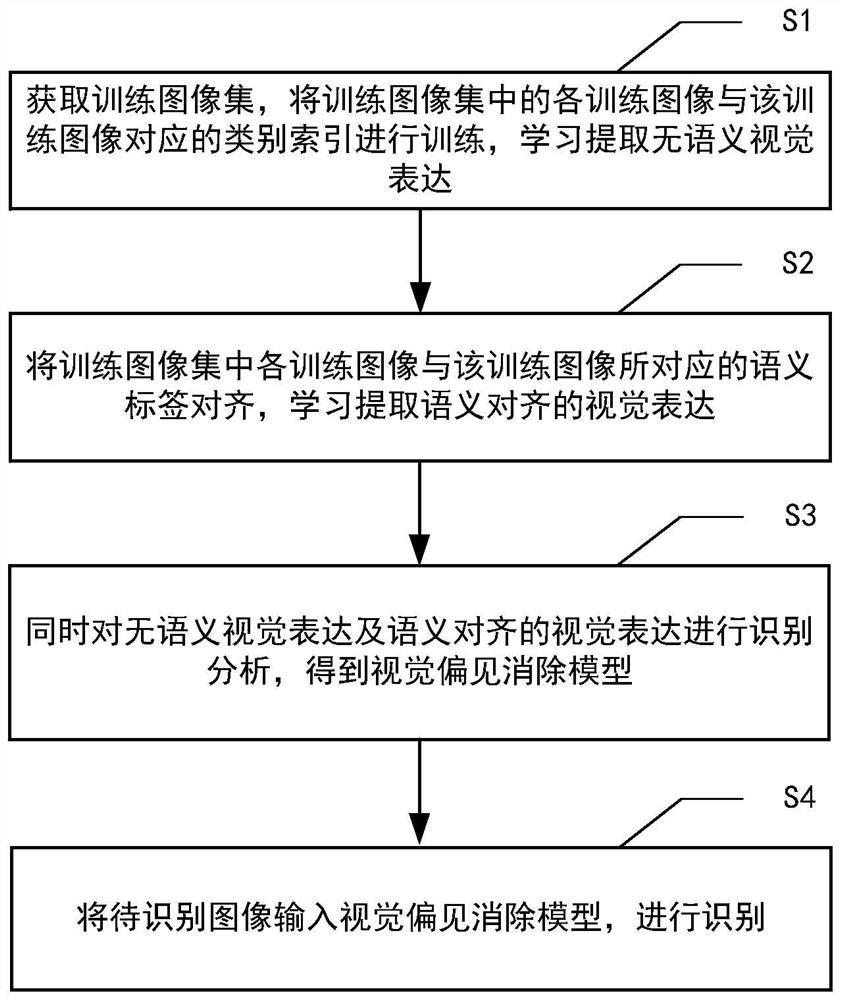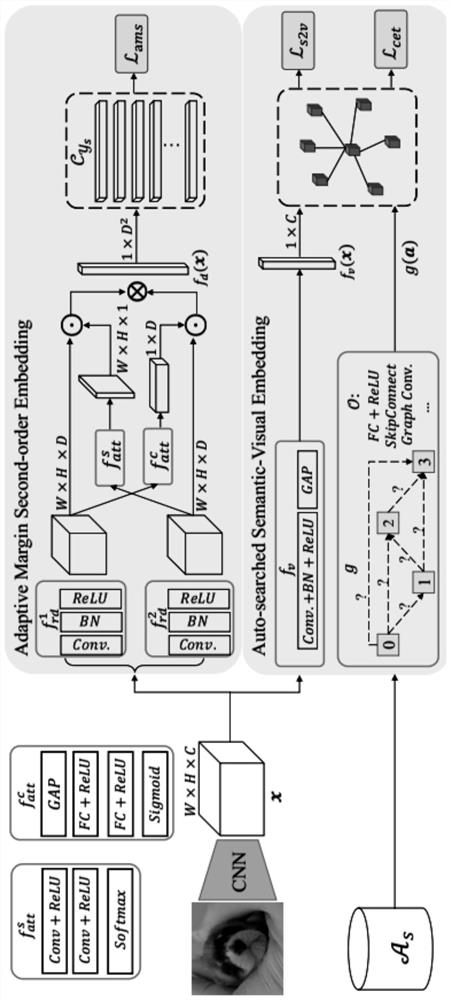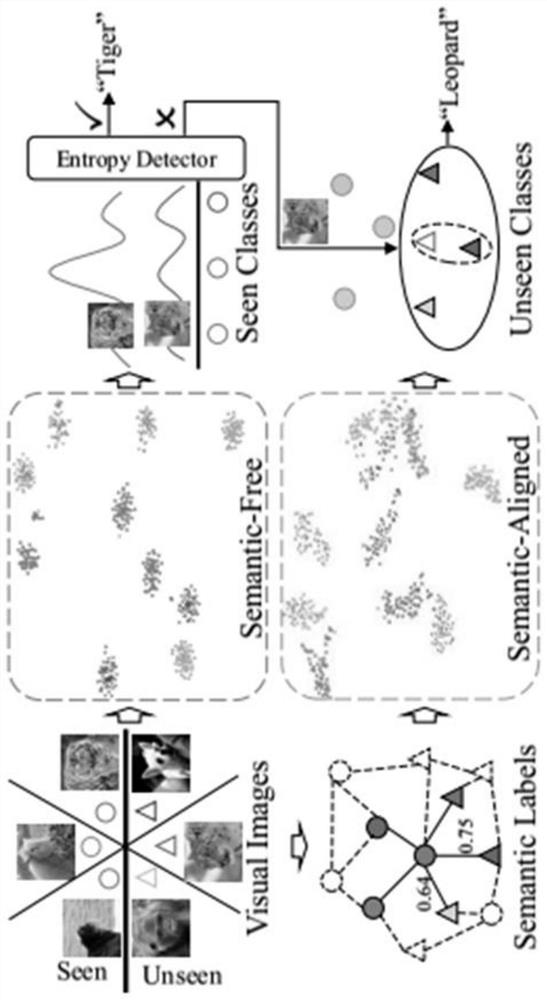An image recognition method and device
An image recognition and image technology, applied in neural learning methods, character and pattern recognition, instruments, etc., can solve the problem of weak distinction of semantic knowledge and achieve the effect of improving recognition ability
- Summary
- Abstract
- Description
- Claims
- Application Information
AI Technical Summary
Problems solved by technology
Method used
Image
Examples
Embodiment Construction
[0024] In order to make the objectives, technical solutions and advantages of the present invention clearer, the present invention will be further described in detail below with reference to specific embodiments and accompanying drawings.
[0025] The embodiment of the present invention proposes a new domain-aware-based bias elimination technology to realize an unbiased zero-sample image recognition application. The core idea is to construct two complementary visual representations, namely, a semanticless visual representation and a semantic visual representation, to deal with samples in known and unknown domains, respectively. For semantic-free visual representations, an adaptive second-order embedding module can be designed to extract second-order statistics in visual information, and maximize its inter-class differences through an adaptive edge Softmax. This makes semantic-free visual representations sufficiently distinguishable to perform both category prediction for known...
PUM
 Login to View More
Login to View More Abstract
Description
Claims
Application Information
 Login to View More
Login to View More - Generate Ideas
- Intellectual Property
- Life Sciences
- Materials
- Tech Scout
- Unparalleled Data Quality
- Higher Quality Content
- 60% Fewer Hallucinations
Browse by: Latest US Patents, China's latest patents, Technical Efficacy Thesaurus, Application Domain, Technology Topic, Popular Technical Reports.
© 2025 PatSnap. All rights reserved.Legal|Privacy policy|Modern Slavery Act Transparency Statement|Sitemap|About US| Contact US: help@patsnap.com



